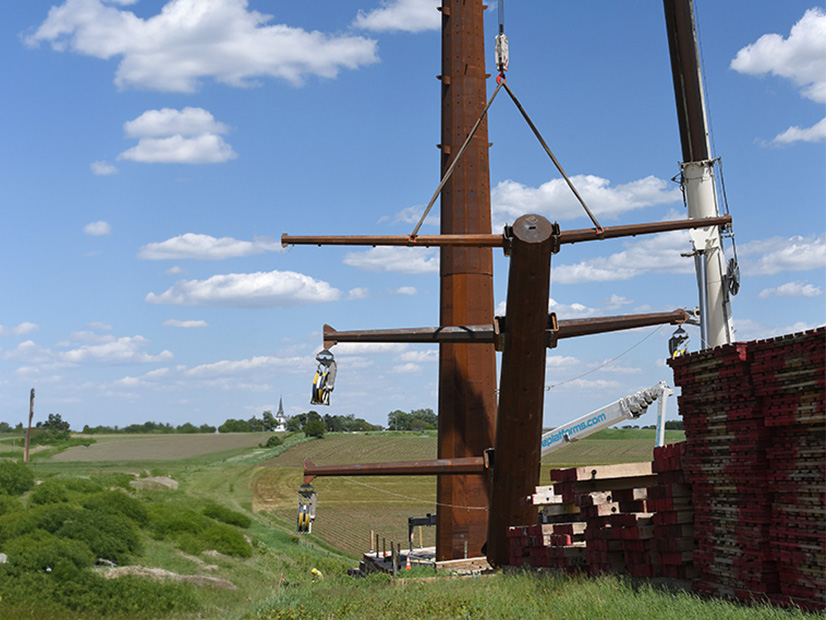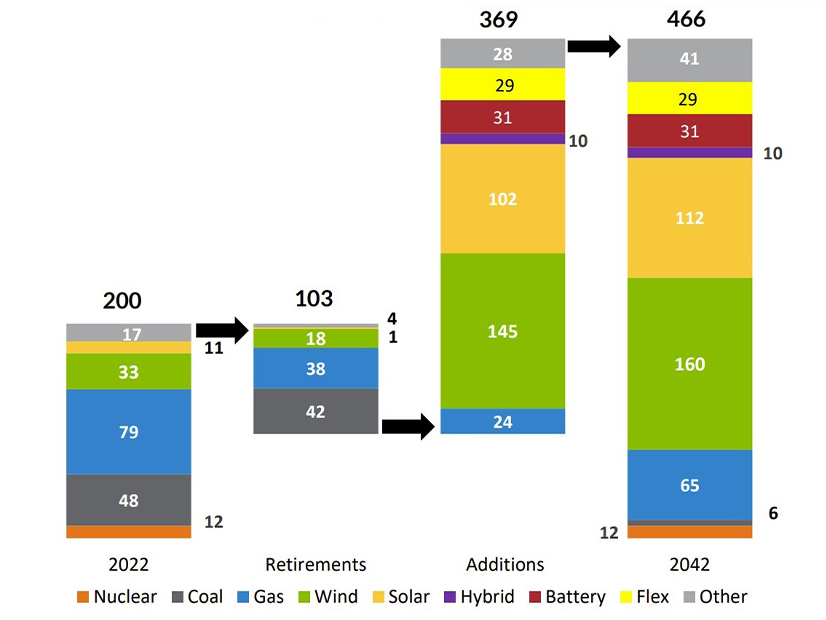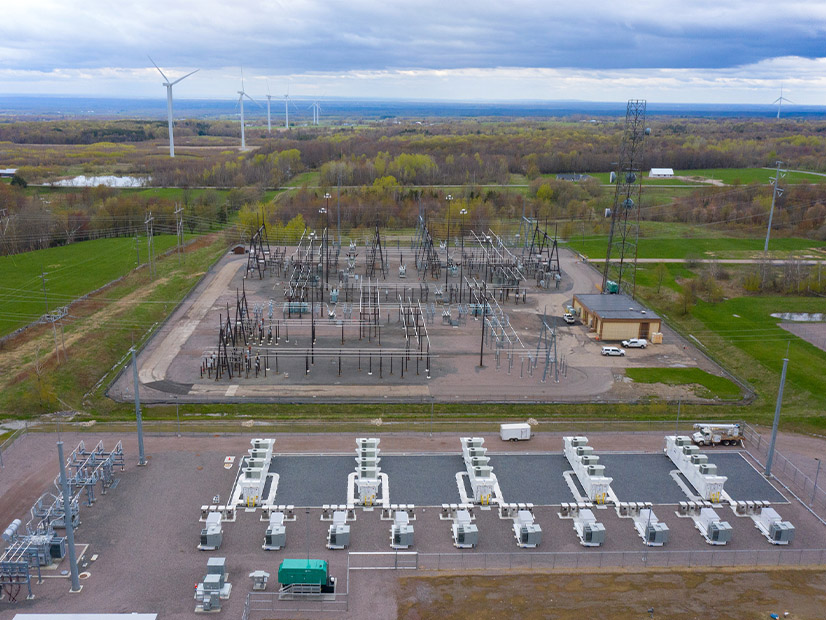To qualify for the Inflation Reduction Act’s tax credit for clean hydrogen, a plant’s power will have to be new clean energy generated in the same region as the plant and, by 2028, be matched to demand hour-for-hour, according to proposed rules the Treasury Department and Internal Revenue Service released Dec. 22.
Those three “pillars” — additionality, deliverability and time matching — are at the core of Treasury’s Notice of Proposed Rulemaking, which details all the definitions and conditions hydrogen producers will have to meet to cash in on the IRA’s 45V production tax credit. Meeting all the proposed requirements in the NOPR could be worth $3/kg of clean hydrogen produced for 10 years from the date a new clean hydrogen plant goes online.
The 45V credit is technology agnostic but requires that a plant’s lifecycle greenhouse gas emissions — measured from “well to gate,” or up to the point of production — must be between .45 kilograms and 4 kg per kilogram of hydrogen. As with other IRA tax credits, the plant also must pay prevailing wages and participate in registered apprenticeship programs.
The base amount of the tax credit has four tiers, beginning at $0.60/kg for emission of less than .45 kg per kilogram of hydrogen, and bottoming out at $0.12/kg for emissions of 2.5 kg to 4 kg. Those rates then can be multiplied by five if the prevailing wage and apprenticeship requirements are met.
To qualify for the credits, the clean hydrogen must be produced in the United States or a U.S. territory.
The NOPR’s provisions on measuring a plant’s lifecycle emissions are where things get complicated, especially if a plant is using electricity off its local grid, which in most cases will include some power generated with higher-emitting fossil fuels. The electrolyzers that split hydrogen off water molecules to make green hydrogen are “very energy intensive,” according to a senior administration official, speaking at a prerelease press call Dec. 21.
“If you put a lot of energy into [making hydrogen], and you’re taking those resources off of powering homes and industry and buildings, then that power has to come from someplace, and if it’s being backed up with fossil fuel power, you’re adding to emissions.”
Treasury worked with the Department of Energy and EPA to develop a workable strategy for measuring lifecycle emissions, Developers or plant owners will be able to use DOE’s Greenhouse Gases, Regulated Emissions and Energy Use in Transportation (GREET) platform, a computer modeling tool, modified for hydrogen, according to the Treasury press release.
The new model and a user’s manual were scheduled to be publicly available Dec. 22.
Treasury, DOE and EPA officials at the prerelease briefing stressed that the rules being released are only proposals. The NOPR includes questions on issues that are still unresolved and need more input from stakeholders, they said.
The release Dec. 22 begins a 60-day comment period. A public hearing is scheduled for 10 a.m. EST March 25.
Energy Attribute Credits
Under the proposed rules, producers would use energy attribute credits (EACs) to demonstrate that they are, in fact, purchasing clean power based on the three criteria. The goal here is to provide rigorous standards for clean energy, while also allowing flexibility to account for emerging and evolving technologies.
In a DOE white paper also released Dec. 22, EACs are defined as “legal instruments that represent an exclusive claim to the attributes of a unit of energy. … In the case of electricity, EACs verify that a certain unit of electricity was generated by a specific entity and has specific associated attributes.”
EACs include renewable energy credits but are not limited to renewable generation.
For the EACs used for the 45V tax credits, the critical attributes include:
-
- New clean energy is defined as any generation that went online within three years of the hydrogen plant going into operation. It could also include existing plants that expand capacity.
- The proposed rule on deliverability would be based on the transmission regions identified in DOE’s recent National Transmission Needs Study. Because California, New York and Texas are self-contained transmission regions, Treasury may consider allowing clean power from an adjacent region to qualify.
- Technology to provide hourly time matching is not yet widely available, so Treasury is proposing a transition period to allow annual matching until 2028, “when hourly tracking systems are expected to be more widely available.”
The exact transition timeline for time matching is one of the questions raised in the NOPR for additional stakeholder input.
Others include whether electricity from existing clean power projects or power plants that otherwise might be retired, such as nuclear plants, might be classified as new clean energy under certain conditions, and whether hydrogen produced from renewable natural gas or “fugitive methane” might qualify.
“We’re looking for pathways that will create the environmental integrity that we’re seeking, but that we believe will allow the nuclear industry to participate in the clean hydrogen economy,” the senior official said. “There are a series of potential pathways, including upgrading the facility, relicensing pathways that anticipate losses in generation as a result of retirements that could happen and including a carveout that would create a safe harbor essentially, where a percentage of their production can go into clean hydrogen.”
What They’re Saying
The U.S. has a well-established hydrogen industry, based on “gray” hydrogen technologies that use methane or natural gas (which is predominantly methane) as feedstocks. Speaking at the prerelease briefing, DOE Deputy Secretary David Turk noted that at present, clean hydrogen production in the U.S. is under 1 million metric tons (MMT) per year. President Biden’s goal is an industry that can produce 50 MMT per year by 2050.
“The 45V clean energy, hydrogen production tax credit is an important part of our strategy to unlock private investment across sectors and build a clean energy economy and tackle the climate crisis,” White House Senior Advisor John Podesta said at the briefing. “Clean hydrogen will be critical for reducing emissions from hard-to-decarbonize sectors like heavy industry and heavy transportation.”
“There is significant industry support for this [three-pillar] approach, as well as billions of dollars being invested in projects that have already announced they will follow this basic structure,” said Deputy Treasury Secretary Wally Adeyemo. “In addition to industry, investors have made it very clear that they’re looking to invest in projects that produce clean hydrogen, as well. … Allies and partners have already put similar structures for hydrogen in place, [so] having clear rules to ensure the U.S. develops a clean hydrogen industry will help drive innovation and demand for more advanced American-made electrolyzers.”
Backing up such statements, Treasury also has released additional statements from industry stakeholders voicing mostly positive support for the NOPR in general and the three pillars.
A recent letter from seven clean hydrogen and electrolyzer companies, including Air Products, Nordex Green Hydrogen and Electric Hydrogen, expressed “confidence that proposed 45V guidance requiring … additionality from day one, strong deliverability standards and a phase-in of hourly matching by 2028 … will support scaled industry growth.”
Laura L. Luce, CEO of Hy Stor Energy, a Mississippi-based green hydrogen producer, also supported the three pillars as critical foundation for long-term off-take agreements for clean hydrogen. The time-matching provisions in the NOPR “ensure the production of competitively priced hydrogen advanced organizations that are fully committed to the most timely and efficient industrial decarbonization,” Luce said.
But U.S. lawmakers are split on how strictly the three pillars should be formulated and enforced. Sen. Maria Cantwell (D-Wash.) led a group of 11 Democratic senators in a recent letter to Treasury, DOE and the White House, warning that overly strict definitions of clean hydrogen in the proposed rules might hamper industry growth.
The seven hydrogen hubs being funded with $7 billion from the Infrastructure Investment and Jobs Act include projects that would use natural gas or nuclear, which might not qualify for the tax credits.
In an Oct. 16 letter, Sen. Sheldon Whitehouse (D-R.I.) and seven other Democratic senators lobbied for a strict definition of clean hydrogen, excluding any produced with natural gas.
The lawmakers expressed grave concern about “the risk posed by weak standards for what constitutes clean hydrogen. Fundamentally, the 45V tax credit must not be applied to any projects that directly or indirectly increase power sector GHG emissions. Without safeguards, 45V risks creating a shell game in power markets, where existing clean generation gets nominally claimed by hydrogen electrolyzers, but the resulting gap in grid capacity is backfilled by fossil fuel generation.”
Disagreements over Hourly Matching
The proposal’s timeline for requiring hourly matching won praise from environmental organizations but drew fire from industry groups, including the American Council on Renewable Energy (ACORE), the American Clean Power Association and the Edison Electric Institute.
ACP CEO Jason Grumet called it a “a fatal – but fixable – flaw.”
“Imposing an hourly matching provision too early for first-wave green hydrogen projects will discourage a significant majority of clean power companies from investing in green hydrogen manufacturing and facilities,” he said. “ACP is encouraged to see that the Treasury Department has specifically requested comment on the adequacy of the transition schedule.”
Richard McMahon, EEI’s senior vice president for energy supply and finance, said the proposal lacked the flexibility to allow a rapid scale up to support a hydrogen economy.
The 2028 matching requirement “would undermine the commercial viability of this nascent domestic sector and severely limit the widespread adoption of hydrogen that is produced using grid-connected facilities,” he said. “As a result, the cost-reducing benefits for hydrogen included in the Inflation Reduction Act would be squandered, and an important new tool that electric companies and customers could be using to drive down carbon emissions and costs would be sidelined.”
But the Union of Concerned Scientists praised the proposal, calling it a “a strong foundation for accurately capturing the true climate impact of hydrogen production projects.”
“Rigorous guardrails are necessary to ensure the hydrogen tax credit incentivizes the scale-up of the right hydrogen, not just any hydrogen,” said Julie McNamara, senior energy analyst and deputy policy director of UCS’s Climate and Energy Program. “No less than whether or not hydrogen actually serves as a tool for climate progress hangs in the balance.”
The Natural Resources Defense Council also endorsed the hourly matching proposal.
“Anything less than the climate and consumer protections proposed today would be a giveaway to legacy energy companies eager to hijack hydrogen at the direct expense of the climate and consumers,” said Rachel Fakhry, NRDC’s policy director for emerging technologies. “Broad loopholes would be disastrous for the climate, kneecap our efforts to clean up the power grid, and harm the global potential of the U.S. clean hydrogen industry. Treasury must hold firm and finalize this strong guidance.”


